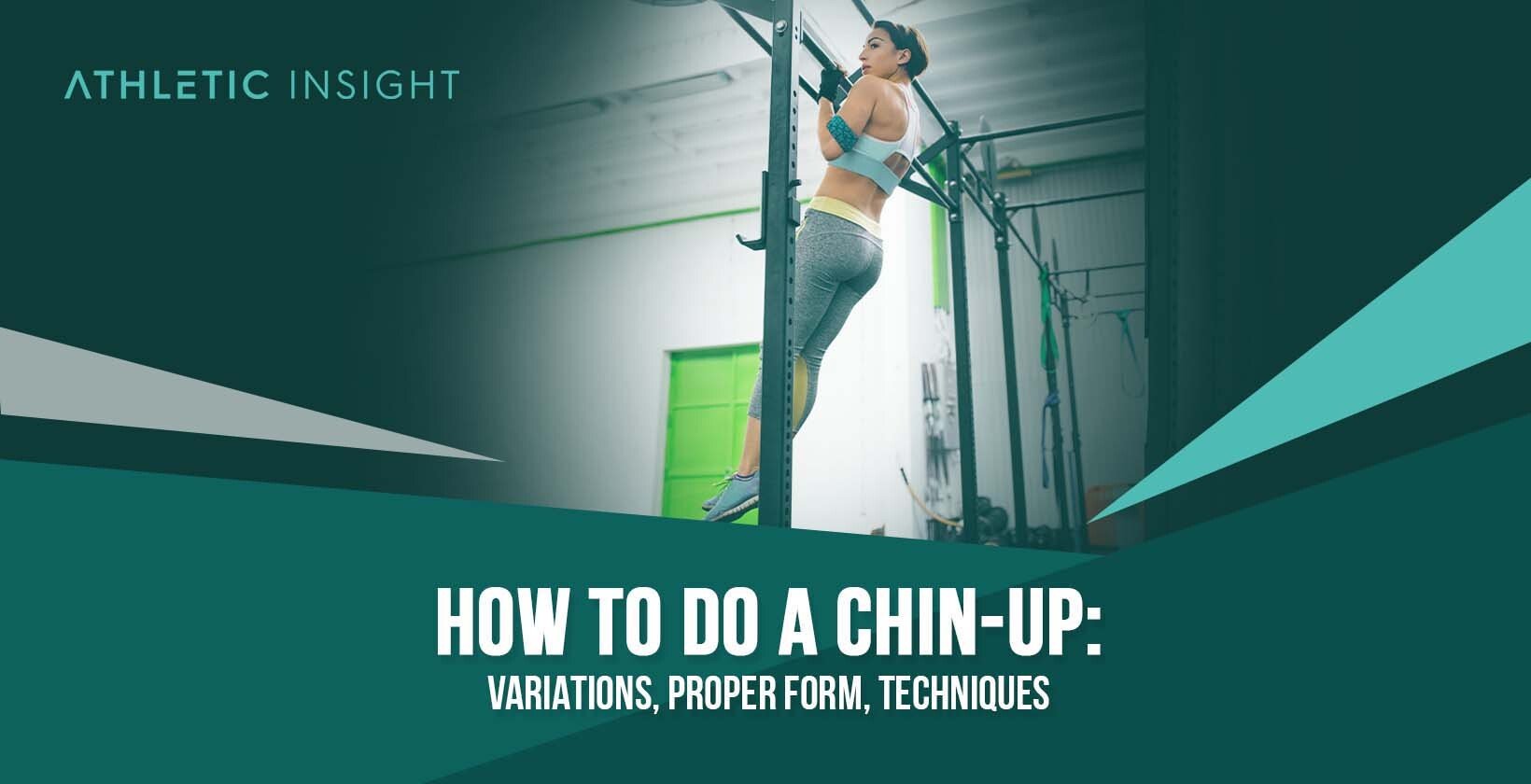Chin-ups are an effective bodyweight exercise that targets the biceps brachii, brachialis, latissimus dorsi, teres major, posterior deltoid, and the overall core. In addition to increasing strength and muscle size, the chin-up aids in improving grip strength as well.
However, without proper form, athletes can risk injury. Therefore, correctly performing this exercise is essential for maximum benefits. To perform this movement, you need to grip the bar with your arms shoulder-width apart. Then, with your palms facing inwards, pull your body up until your chin reaches the bar.
Chin-ups are similar to pull-ups, but the hand placement is reversed with your hands pointing outwards. When your hands face inwards, like with a chin-up, you naturally work out certain muscles more so than with your hands facing outwards (like a pullup). These muscles include the biceps, chest, and abdominals.
Although the chin-up is a simple movement to learn, beginners may make common mistakes that could hinder their performance. A few of those mistakes are not using a full range of motion, not engaging the core muscles, using momentum rather than isolating the muscles, and not engaging the shoulder muscles.
When an individual does not use proper chin-up techniques, there is always a risk of injury. Because the arms are the primary driving force for this movement, some common injuries can affect the shoulders, biceps, elbows, and neck.
To master a chin-up, an athlete should be moving through the action slowly and deliberately while engaging the shoulders the entire time. Individuals will reap the full benefits when they complete this exercise with a full range of motion from the bottom up to the top.
How to Perform a Chin-Up with Proper Form
Proper form is essential when completing any exercise, including chin-ups. Engaging the shoulder muscles throughout the entire movement is critical, and athletes should not hang loosely at the bottom of the action.
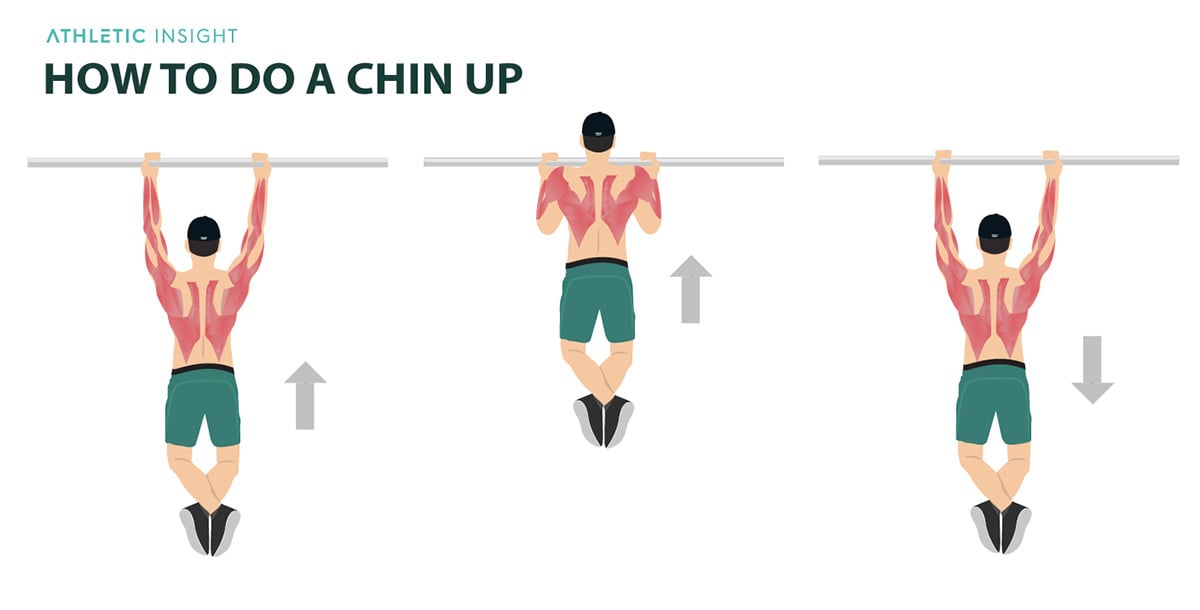
- Grip the bar with the palms facing toward the body
- Extend your arms as much as possible
- Maintain a neutral spine and a strong core throughout while keeping your neck aligned
- Pause briefly at the top of the movement and gently move back to the starting position
To dominate a chin-up and get the most benefits, keep the shoulder blades back at all times and move through these steps. The Chin-up is an effective exercise and one of the best back workouts to include in a routine.
1. Grip the bar with the palms facing toward the body
Grip the bar with the palms facing toward the body. The chin-up grip is easier to hold than that of the pull-up grip since you are activating the biceps muscles more. When doing chin-ups, the harder you squeeze the bar, the easier the repetition.
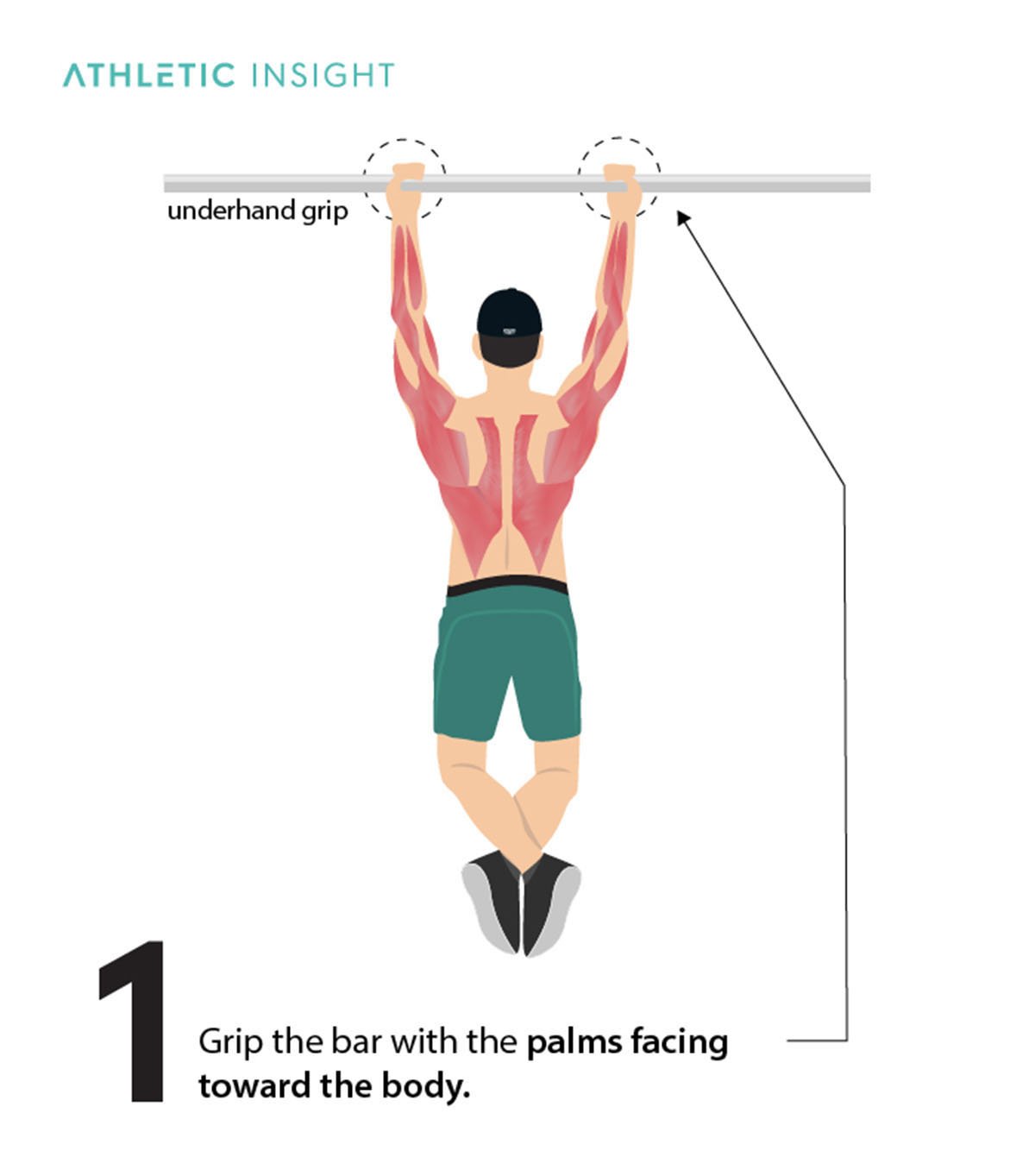
2. Extend your arms as much as possible
Extend your arms as much as possible to avoid cheating yourself out of a complete repetition. If you do not start from the bottom, especially after each rep, you are at risk of shortening the range of motion in your muscles.
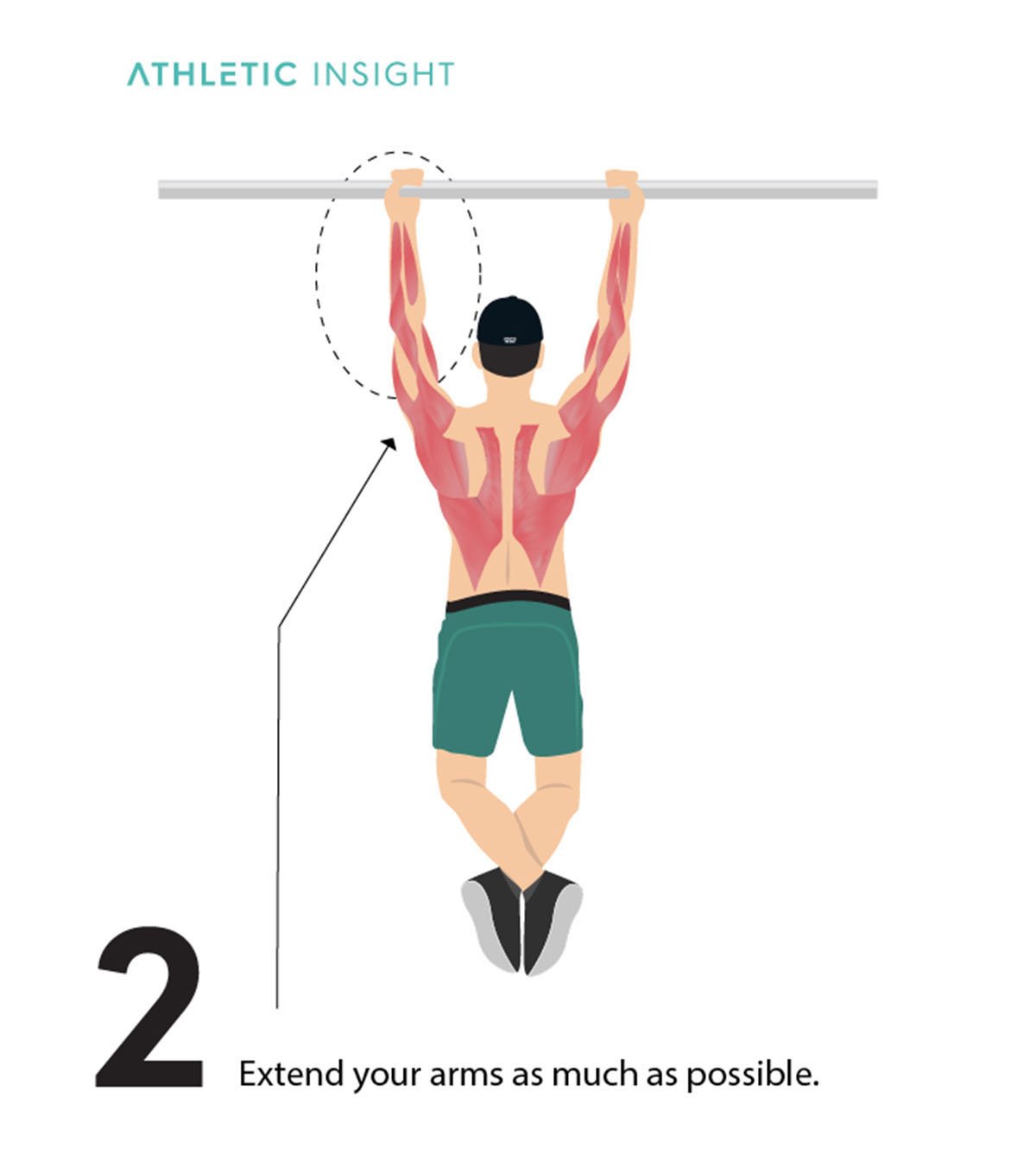
3. Maintain a neutral spine and a strong core throughout while keeping your neck aligned
Maintain a neutral spine and a strong core throughout while keeping your neck aligned. While the goal is to bring the bar to your chest, keeping a neutral spin will help to prevent injuries. It will also aid in completing the rep as your body is pulling evenly if you are in a neutral position.
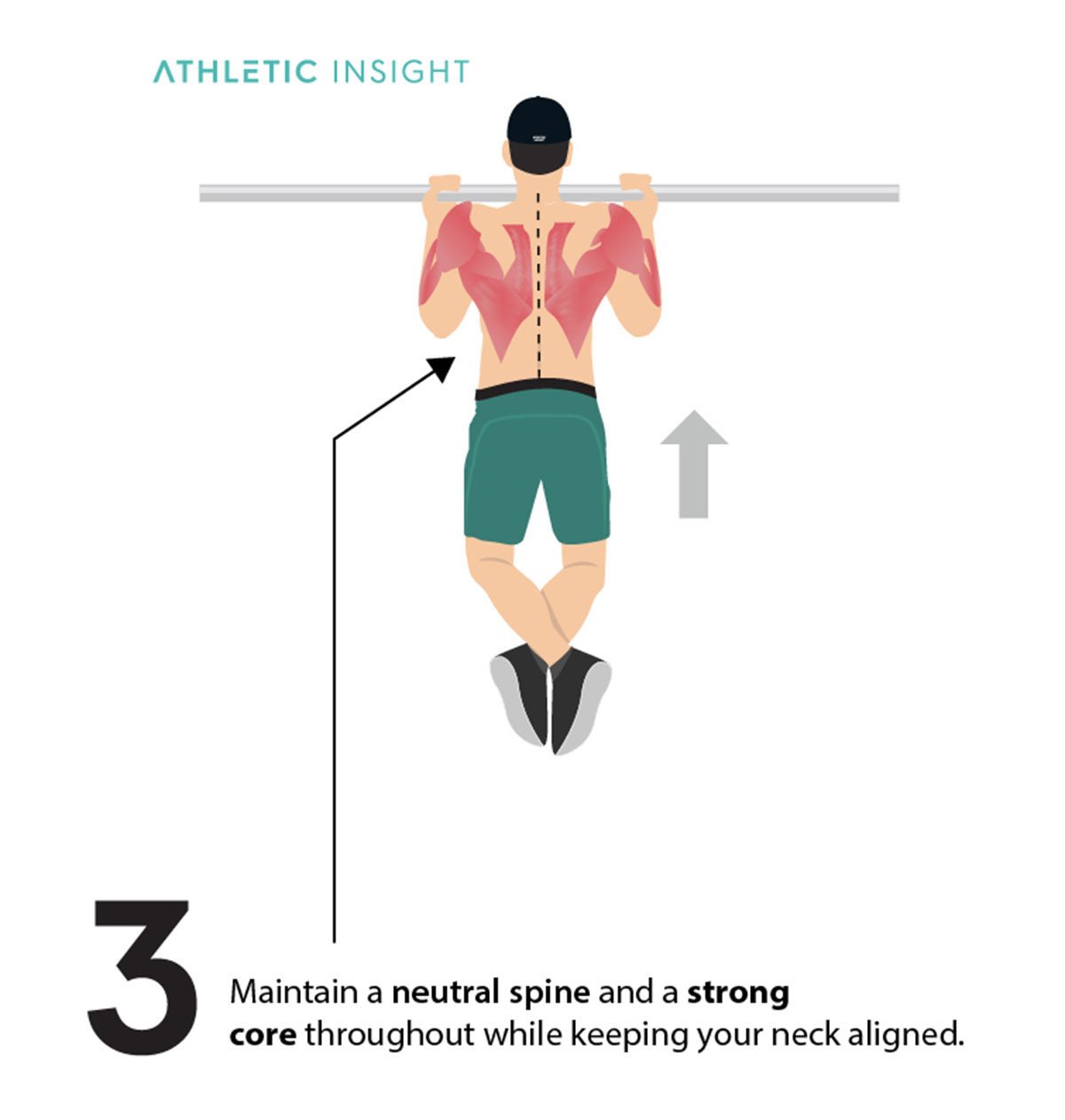
4. Pause briefly at the top of the movement and gently move back to the starting position
Pause briefly at the top of the movement and gently move back to the starting position. The longer you pause and the slower you let yourself back down to the starting position, the better. The muscles stay under more tension during these eccentric moments, which will help develop the back and biceps more so than just letting yourself fall to the starting position.
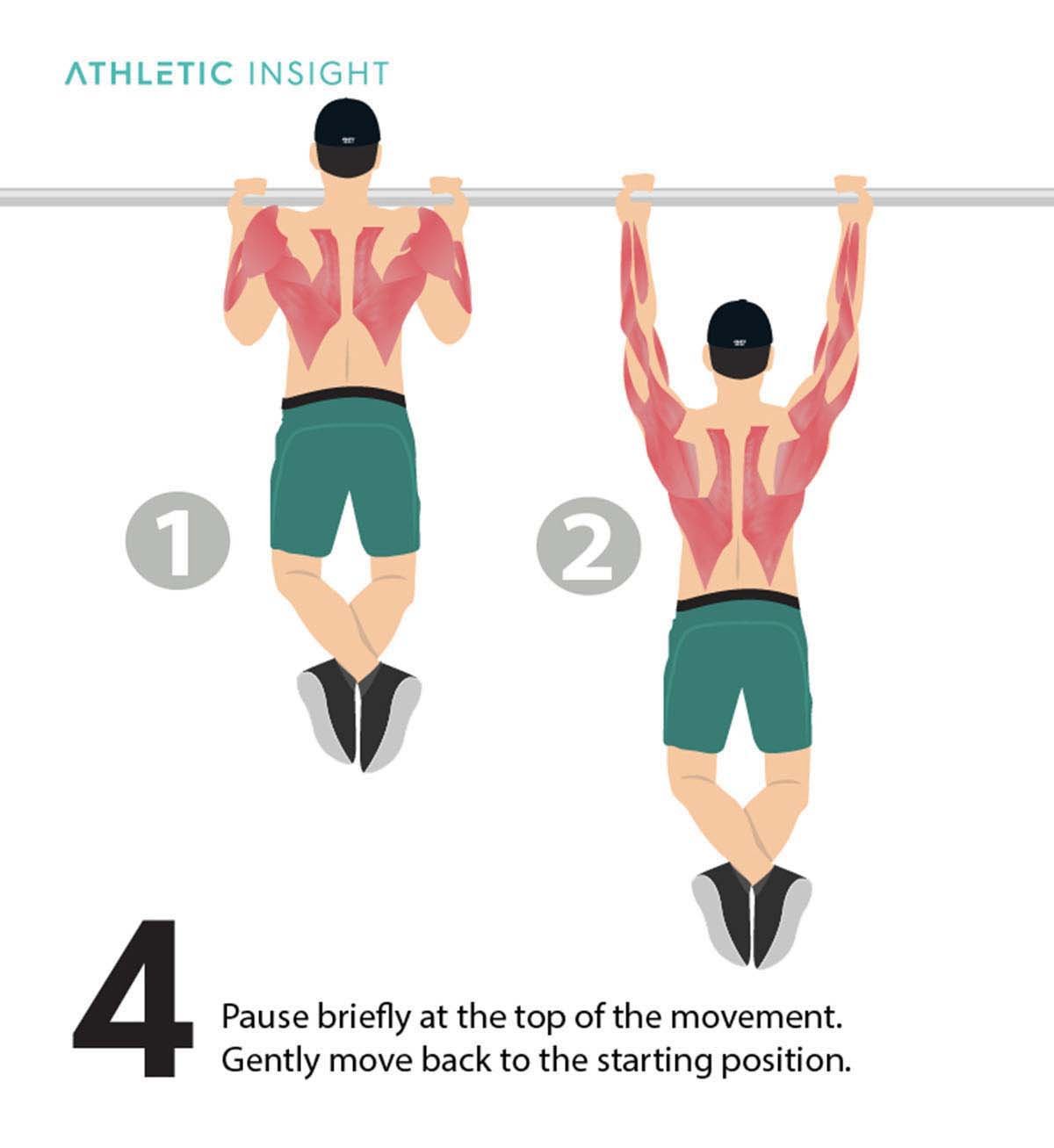
What Are the Benefits of a Chin-Up?
Chin-ups may be one of the most overlooked strength exercises at the gym today. However, anyone who wants to build on their routine and target the biceps and upper back should incorporate this movement regularly.
Athletes who perform this movement will see these benefits of chin-ups quickly.
- Increases strength and definition in the upper arm with a focus on the biceps
- Improves grip strength
- Gives you auxiliary strength development targeting the arm muscles
What Are the Mistakes for Chin-Up Form?
When athletes do not use good chin-up form, not only do they not get the full benefits of the exercise, but they risk serious injury. Following are some chin-ups mistakes.
- Handgrip too wide, risking shoulder and elbow injury
- Moving too fast through the movement can cause strains or tears in muscles and tendons
- Hyper-extending the head and neck out of alignment, risking strain on the neck muscles
- Rolling the shoulders forward rather than back results in added stress on the rotator cuff muscles and elbows
How to Determine Proper Weight for a Chin-Up?
Athletes new to the chin-up exercise will have to work towards their full body weight. However, several alternatives help determine the proper weight for a chin-up as you build strength and endurance.
Various equipment, including exercise bands or a chin-up assistance machine, target the same chin-up muscles worked as doing the movement with bodyweight. Beginners can start with 50% of their body weight as assistance and slowly lower the aid until they can complete the activity independently.
Which Muscles Are Involved While Performing a Chin-Up?
For anyone asking, what do chin-ups work, this movement isolates specific auxiliary muscles to help build overall strength and endurance. Naturally, they work the arm muscles, but it is more complex than that.
Arm Muscles
- Biceps brachii
- Brachialis: attaching to the elbow
- Brachioradialis: forearm muscles
The arm muscles are activated when an individual pulls up to the top of the movement and slowly descends to the starting position.
Upper and Lower Back Muscles
- Latissimus dorsi
- Teres major
- Thoracolumbar Fascia
With proper form, the upper back muscles will be continuously active to support the shoulders and lower body during the movement. In addition, the thoracolumbar fascia is a stabilizer in the lower back that helps maintain spinal alignment during the exercise.
Shoulder Muscles
- Posterior Deltoid: the back of the shoulder
These shoulder muscles are critical to stabilize the shoulder and support the arms and upper back during the movement. Therefore, the shoulder muscles should be active throughout the entire exercise.
Core Muscles
- Transverse Abdominis
- Spinal Stabilizers
- Lumbar Multifidus
Keeping a tight core will prevent injury, activating these muscles to keep the spine in a neutral alignment.
What Are the Chin-Up Challenges?
Chin-up challenges are ways to mix up a workout routine and push athletes to their limits for jumpstarting strength and endurance.
Some popular chin-up challenges below target specific chin-up benefits.
- Narrow Parallel-Grip Chin-Up: using parallel handle grips
- Narrow Supinated-Grip Chin-Up: Use a narrow handgrip on the bar
- Medium Parallel-Grip Chin-Up: using parallel handle grips for the movement
- Sternum Chin-Up: moving the body upward until the sternum reaches the bar
- Narrow Pronated Pull-Up: alternative grip with palms face outward from the body
- Mixed-grip Chin-Up: performing movement with right side at medium width while left side at narrow grip
- Mixed-grip Chin-Up II: executing movement with left side at medium width while right side at narrow grip
- Subscapularis Pull-Up: a wide pronated grip pull-up
What Are the Chin-Up Variations?
The variations of chin-up can provide alternative benefits to the chin-up muscle group and help the body from becoming accustomed to the same movement.
- Underhand Chin-Ups: performed with palms facing individual at a narrow grip
- Neutral-Grip Chin-Ups: performed with palms facing each other making it easier on the wrists
- Angled-Grip Chin-Ups: using angled grip pull-up bars targeting smaller supporting muscle groups
- Gymnastic-Ring Chin-Ups: using gymnastic rings to enhance stability
- Overhand Pull-Ups: overhand grip on the pull-up bar to engage the back muscles more
What Are the Necessary Equipment for a Chin-Up?
Chin-ups target muscles that are useful in other exercise movements. All you need to perform a best chin-up barbells is a pull-up bar. Some individuals may require a bench or box to stand on and an exercise band for assistance during the movement.
Which Muscles Can Be Affected More From a Chin-Up?
Of course, the arms and shoulder muscles are more affected when performing a chin-up than in other exercises. Therefore, this movement helps isolate these muscles effectively without using large supportive muscle groups.
What Are the Back Muscle Exercises with a Chin-Up?
Individuals can incorporate best chin-ups for back exercises by alternating hand placement. An example of a well-rounded routine is included below.
- Supinated chin-ups
- Medium grip width chin-ups
- Mixed grip chin-ups
- Lat pull-downs
- Push-ups
What Are the Chin-Up Related Facts?
It is believed that Johann Bernhard Basedow helped perfect the chin-up and pull-up movements back in the late 1770s. He was a well-known gymnast in Prussia and brought more attention to today’s chin-up muscles exercises we do now.
Does Chin-Up Increase Testosterone?
Anytime an individual puts their body through intense exercise, testosterone levels will increase temporarily. However, testosterone levels will decline after the workout, but athletes will still see chin-ups benefits.
Is a Chin-Up Practiced Within CrossFit?
No, the chin-up is typically not practiced within CrossFit competitions, but many athletes will perform them as part of their training exercises. In addition, the muscles used in a chin-up will benefit other movements, such as the pull-up and deadlifts.
Is Chin-Up a Military Movement?
Yes, the chin-up is a military exercises that focuses on strength and endurance training. So what are chin-ups good for, and how can they help? Naturally, the muscles worked will support a strong upper back, shoulders, and arms for lifting weight.
Is a Chin-Up Dangerous?
Naturally, any exercise not done correctly can be dangerous and prone to injury. For example, do chin-ups work back muscles? Yes, they engage some upper back muscles, but the chin-up is a highly safe movement to perform on average.
Is a Chin-Up Push or Pull?
Supinated chin-ups are a pull exercise as the individual pulls the body upward to the starting position. Rather than pushing the body away from the bar, athletes pull toward it.
Is a Chin-Up an Olympic Lift?
No, the chin-up is not an Olympic lift, but it helps build muscle strength and endurance that will benefit Olympic lift movements. Additionally, by performing supinated chin-ups with palms facing in, athletes can isolate these smaller supporting muscles to use with alternative exercise movements.
Is a Chin-Up a Compound Exercise?
No, the chin-up is not a compound exercise. Instead, it is classified as an auxiliary movement that isolates specific supporting muscles, including the biceps and posterior deltoids.

